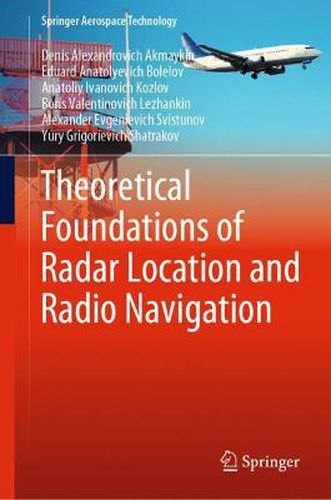Readings Newsletter
Become a Readings Member to make your shopping experience even easier.
Sign in or sign up for free!
You’re not far away from qualifying for FREE standard shipping within Australia
You’ve qualified for FREE standard shipping within Australia
The cart is loading…






This title is printed to order. This book may have been self-published. If so, we cannot guarantee the quality of the content. In the main most books will have gone through the editing process however some may not. We therefore suggest that you be aware of this before ordering this book. If in doubt check either the author or publisher’s details as we are unable to accept any returns unless they are faulty. Please contact us if you have any questions.
The book represents a study guide reciting theoretical basics of radar location and radio navigation systems of air and sea transport. This is the distinctive feature of this study guide.
The study guide states the principal physics of radar location and radio navigation, main measuring methods of proper and relative movement parameters of an object, tactical and technical characteristics of radar location and radio navigation systems, including examining issues on radiofrequency signals detection and its parameters estimation against background and interference of different type, filtering, combined detection and rating of signals, signals resolution and classification. The structural and functioning principles of the current and advanced radar location and radio navigation systems of air and sea transport are represented in the study guide with an adequate completeness.
The study guide features the result of years long lecturing on radar location and radio navigation theoretical courses at the Moscow State Technical University of Civil Aviation and G.I.Nevelskiy Maritime State Technical Academy.
The study guide is designated for students of radio-engineering specialties in area of air and sea transport. The study guide can be useful for radio engineers working in the field of air and maritime transport, and for graduate students and academic researchers as well.
$9.00 standard shipping within Australia
FREE standard shipping within Australia for orders over $100.00
Express & International shipping calculated at checkout
This title is printed to order. This book may have been self-published. If so, we cannot guarantee the quality of the content. In the main most books will have gone through the editing process however some may not. We therefore suggest that you be aware of this before ordering this book. If in doubt check either the author or publisher’s details as we are unable to accept any returns unless they are faulty. Please contact us if you have any questions.
The book represents a study guide reciting theoretical basics of radar location and radio navigation systems of air and sea transport. This is the distinctive feature of this study guide.
The study guide states the principal physics of radar location and radio navigation, main measuring methods of proper and relative movement parameters of an object, tactical and technical characteristics of radar location and radio navigation systems, including examining issues on radiofrequency signals detection and its parameters estimation against background and interference of different type, filtering, combined detection and rating of signals, signals resolution and classification. The structural and functioning principles of the current and advanced radar location and radio navigation systems of air and sea transport are represented in the study guide with an adequate completeness.
The study guide features the result of years long lecturing on radar location and radio navigation theoretical courses at the Moscow State Technical University of Civil Aviation and G.I.Nevelskiy Maritime State Technical Academy.
The study guide is designated for students of radio-engineering specialties in area of air and sea transport. The study guide can be useful for radio engineers working in the field of air and maritime transport, and for graduate students and academic researchers as well.